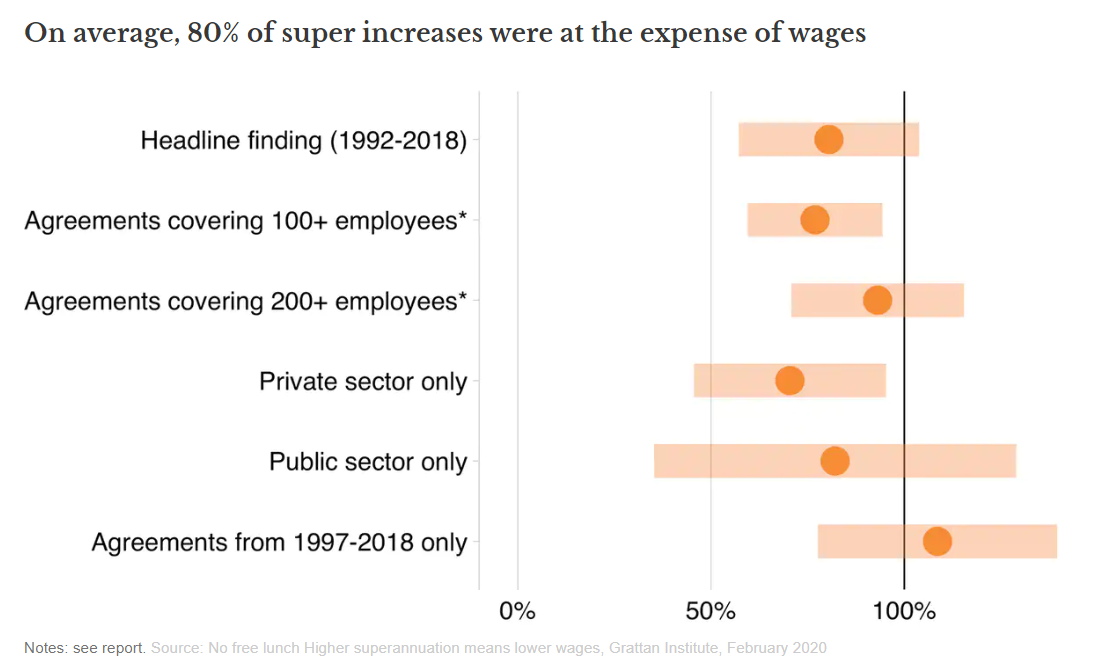Last week, The Grattan Institute released explosive research showing that lifting the superannuation guarantee from 9.5% to 12% would unambiguously lower workers’ wage growth:
On average 80% of the cost of increased compulsory super contributions was passed on to workers through lower wage rises than would have been expected over the life of those agreements. The long-term impact is likely to have been higher.
The graph shows the overall finding using data from 1992 to 2018 and also the results from subsets of the including the private or public sectors, big and small firms and the period since 1997.
In each case somewhere between most and all of the cost of super increases was passed through to workers in the form of lower wage increases…It is unlikely the leglislated future step ups in compulsory super contributions will be different from the earlier ones.
Although wage growth is slower now than in the past, wages are nevertheless – by all measures – growing by more than 2% a year, offering ample room for employers to wind back wage increases in order to fund each of the five scheduled annual step ups of 0.5% in compulsory super contributions that begin on July 1, 2021.
In fact, if workers’ bargaining power has fallen recently – as some suggest – employers might feel they can push even more of the cost of higher super onto workers than in the past.
On Friday, the Reserve Bank of Australia (RBA) backed the Grattan Institute’s findings at a parliamentary committee hearing in Canberra:
The central bank admitted on Friday that the higher super contributions mandated by the previous Labor government would undermine its attempts to generate higher wages…
The RBA said international and local experience suggested about 80 per cent of the scheduled increase in the super guarantee would be paid for by lower pay rises…
RBA assistant governor Luci Ellis said it had “shaved” its worker pay forecasts to reflect that higher compulsory super will dampen future wage growth for private sector workers, offsetting wage increase pressures from a tightening labour market.
Wage growth would have got “a little bit of a pick-up from here” if not for the legislated requirement for business to boost their superannuation contributions, Dr Ellis said.
“Historically about 80 percent of the increase in the non-cash benefit tends to show up as somewhat slower wages growth than what you would have otherwise seen.”
“It’s not a full trade-off but it’s most of it.”
Opposition to lifting the superannuation guarantee intensified last week after the Australian Council of Social Service claimed that increasing the superannuation guarantee to 12% would unambiguously hurt low-income earners and demanded that the “flawed system” of tax breaks for superannuation concessions be fixed.
National Seniors Australia and the Nurses Professional Association of Queensland mounted similar arguments, whereas Industry Super Australia admitted that the superannuation concession structure is grossly unfair and needs reform.
Given the strong opposition, the Morrison Government is almost certain to cancel the legislated lift in the superannuation guarantee to 12%.


